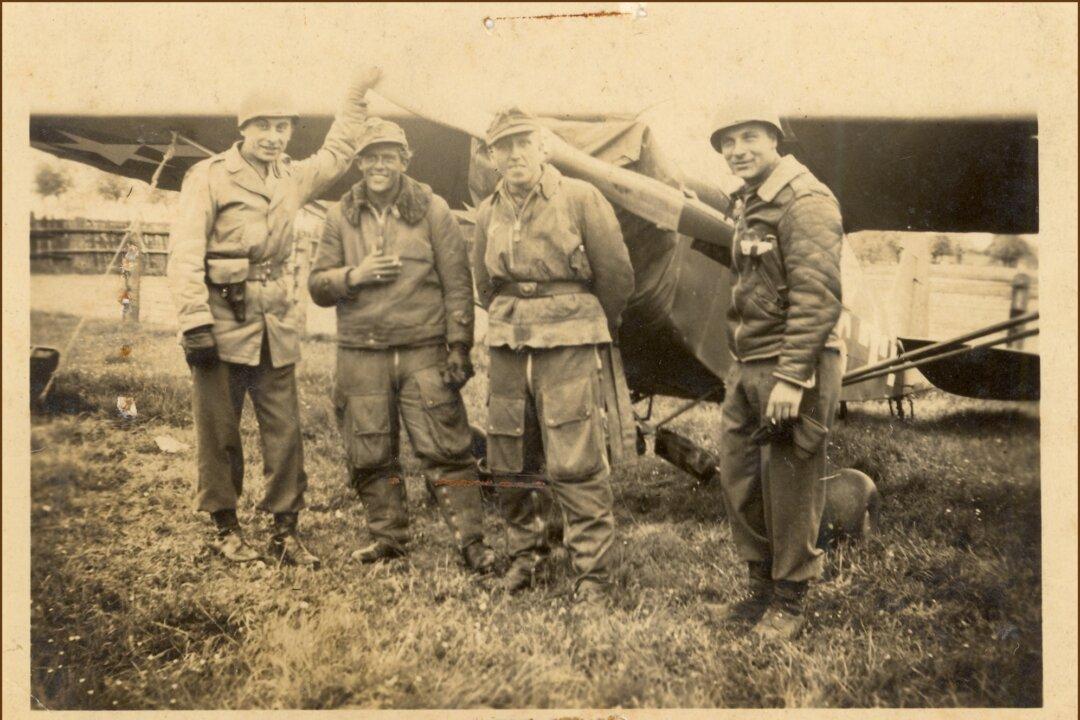Back in the early days of consumer photography, cameras came from the factory with a roll of film sealed inside of them. When someone finished shooting the roll, he had to mail the entire camera to Kodak in Rochester, New York, where the film would be developed, the photos printed, and a new roll of film installed in the camera.
The entire operation would be mailed back to the consumer, and the process would repeat. It was painfully slow. As technology developed (no pun intended), cameras and film were sold separately, but amateur photographers still had to wait a week to see their pictures.
In 1943, 34-year-old Edwin Herbert Land was on vacation in Santa Fe, New Mexico with his wife and daughter. He shot some photos of his 3-year-old, who asked why she couldn’t see the pictures right away.
That got Land thinking. What if a camera could develop its own film moments after a picture was taken, cutting the wait from a week down to a minute?
Four years later, in 1947, Land demonstrated his “instant photography” in New York City at an optical society meeting. Also in attendance was a group of science reporters. While they were skeptical at first, they all agreed this was a major innovation in photography. The story made headlines in major newspapers across the country.
“Another key thing was that Life magazine had been tipped to it and loved it,” Victor K. McElheny, author of “Insisting on the Impossible: The Life of Edwin Land,” told American Essence.
Several Drawbacks
The early, black-and-white Polaroid film had its limitations. After the photographer waited 60 seconds for the picture to develop, he then peeled the negative from the print. The negative was discarded and the print was saved.But the negative was gooey, and it was easy to get the goo on your fingers. Then, there was the preservation problem.
The print would fade over a short period of time if it weren’t preserved immediately after it was developed. Starting in 1951, along with a box of film came a small, sponge-like device soaked in a chemical that acted as a preservative. The photographer needed to smear it across the print, essentially acting as fixer in a darkroom scenario.
It was wet and smelly. So between the goo and the preservative, it was a messy operation. The need to smear the preservative on each black-and-white photo continued with subsequent models into the 1970s.
In Land’s demonstration to reporters in 1947, some noted blemishes, streaks, and spots on the prints.
Possibly the biggest disadvantage was the photographs were not great. They just didn’t have the quality that came from a conventional negative, and that went for the many models that followed over the next four decades.
Despite these disadvantages, the general public just loved the Polaroid.
“The surprise turned out to be the quality of the experience of being able to share around photos of sentimentally important occasions immediately, on the spot, and if the quality was from the viewer’s point of view not up to snuff—that is, not recording the sentimental event sufficiently—you could take another picture,” said McElneny.
“People liked instant photography more than anyone could have predicted,” McElheny wrote in his book.
Land named his invention the “Polaroid Land Camera,” with Model 95 as the first one to go on the market the day after Thanksgiving in 1948, at Jordan Marsh, which was a major chain of department stores in New England at the time.
“On New Year’s Eve 1956, the one-millionth camera was sold at a dealer’s shop in New Jersey,” McElheny wrote. “The second million followed soon after.”

Good Enough for John Lennon and Andy Warhol
During the 1970s, the Polaroid was John Lennon’s camera of choice. An internet image search for “John Lennon Polaroid” will produce several pictures of Lennon with Polaroid cameras (it appears he owned a few models) and with Polaroid photos he shot. There’s even a photo of him taking a picture of his son, Sean, with one.Not only did the American public embrace the Polaroid, but the art world did as well, with pop art icon Andy Warhol using it even more than Lennon did.
Warhol shot portraits of his celebrity friends (including Lennon), often using a model called The Big Shot, which was produced from 1971 to 1973. It was specifically designed for portraits.
He and Lennon also shot with an SX-70, by far the most popular Polaroid camera, which was produced from 1972 to 1981. It was small and lightweight, and color photos would eject from its body with no need to peel a gooey negative or smear a preservative on them.
However, once again, the quality was not great. In fact, one could argue the black-and-white photos from earlier models were technically superior.
Regardless of the product’s shortcomings, Polaroid cameras were wildly popular in the 1970s, with an estimated one billion photographs shot with them each year.
“While the first cameras were sold in 1948, it wasn’t until 1973 with the introduction of the SX-70 and integral film that Land felt he had achieved his goal,” Deborah Douglas, the director of collections and curator of science and technology at the Massachusetts Institute of Technology Museum, told American Essence. Land also cared deeply about the feedback from professional photographers, such as famed landscape photographer Ansel Adams. “He wanted the advice of society’s creative class—people who were unbound by dreary statistics about market share or the feasibility of this innovation,” Douglas said.
By the mid-1970s, instant photography was cutting into Kodak’s traditional photography business. Kodak took the if-you-can’t-beat-them-join-them approach, and in 1976 marketed its own instant cameras. The least expensive was called “The Crank.”
Uses in Motion Pictures
Land also developed and marketed instant movies, but the endeavor failed. Despite that, the Polaroid camera was an essential tool in motion picture production for decades.Hair and makeup artists and the wardrobe department need to keep a visual record of what actors looked like in each scene. After each scene, a Polaroid would be taken of each actor and labeled with the scene number and any other pertinent information. The wardrobe department would shoot its own Polaroid, usually a head-to-toe shot, for the same reason.
Production designers also used these continuity photographs to recreate props in a scene, such as a table at a restaurant. The props department would shoot Polaroids for a record of where each prop was placed. Actual locations are often used in movies, so if the furniture in someone’s living room needed to be moved to accommodate equipment, the set decorators would shoot a Polaroid of the place so they know where to put things back when they’re done.
In the days of shooting movies on film, cinematographers didn’t see the results of their work until the negatives were developed and a print was struck, which usually took a day or two.
One method of quality control was to shoot a Polaroid (using a model where they can manually set exposure) on set. This way, they could check lighting and contrast before committing the image to film.
Now, digital images have since replaced Polaroids on movie shoots.

Polaroid’s Death—and Resurrection
The short version of the story is that digital photography killed the Polaroid. Land’s vision of being able to view your photos moments after you take them had evolved with digital photos into much better images—at least technically speaking—and they were shareable, unlike a one-of-a-kind Polaroid.Land resigned as Polaroid’s CEO in 1980, and then left his chairmanship and the board in 1982. He died at age 81 in 1991, a few months before the initial release of Photoshop. In 2001, the Polaroid Corporation filed for Chapter 11 bankruptcy protection and became Polaroid Holding Company. It ceased production of cameras in 2007 and film in 2008.
Land’s Legacy
The Massachusetts Institute of Technology has over 9,000 artifacts, including cameras, prototypes, photographs, and notes from Land and the Polaroid Corporation in its permanent collection in its museum.Warhol’s Polaroids have been exhibited in museums and had copies published in a book.
Land didn’t just have a vision for a new way of taking photos; he saw the broad view. He knew the United States is a nation for innovators such as himself.
“In this country, there is an opportunity for the development of man’s intellectual, cultural, and spiritual potentialities that has never existed before in the history of our species,” he once said. “I mean not simply an opportunity for greatness for a few, but an opportunity for greatness for the many.”
Perhaps Land’s greatest legacy is how he inspired Steve Jobs of Apple.
“Steve Jobs was obsessed with Land—from his approach to product development to copying Polaroid’s annual meetings format,” said Douglas.
“If you want to hear a description of the iPhone long before the iPhone was on the horizon,” said McCann, “you need to look at Land describing the SX-70 camera [to the shareholders] before it was completed.”
According to McElheny, “It’s not accidental, I think, that Jobs gives us this iPhone and that Land is giving you with the SX-70 something that he hoped would have some of the properties of an iPhone.”
With all of Land’s commercial and financial success, he never lost sight of what he considered the ultimate success. He once said, “You think that the only thing that counts is the bottom line. What a presumptuous thing to say. The bottom line is in heaven.”






